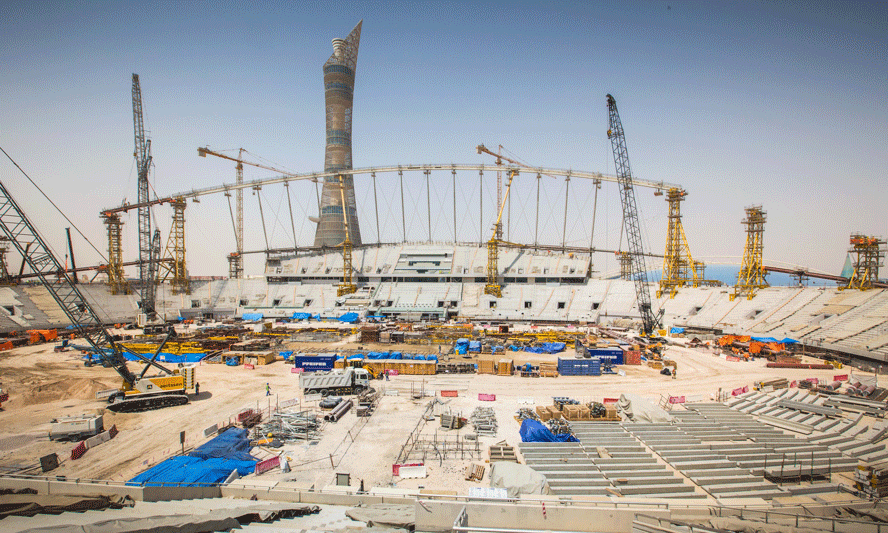The construction team behind Qatar’s Khalifa International Stadium has said that the concrete structure for the 40,000-seat football stadium is 90% finished, with full completion scheduled in two months.
The first proposed venue for the 2022 FIFA World Cup in Qatar, the stadium is undergoing a complete renovation to meet FIFA standards for World Cup stadiums, including the addition of a new building to the east wing, and building a single roof to cover the whole seating area.
Located in Al Rayyan Municipality, the stadium was originally built as a 20,000-seat stadium in 1976. It hosted the Gulf Cup that year. In 1992, it underwent significant upgrades to host the Gulf Cup again. The new iteration will be completely cooled – including the field of play, all seats and concourses.
The redevelopment will allow the stadium to host matches in the group stage, round of 16 and quarter-finals. The Aspire Zone Foundation, one of the Supreme Committee for Delivery and Legacy (SC)’s stakeholders, is leading the construction work.
“We are very happy with the rapid progress of renovation works at the site. Khalifa International Stadium is moving to new heights with structural work in concrete and steel, and the vertical structure is now at level eight while strengthening works are also underway. We expect the stadium to be handed over by the main contractor at the end of 2016,” said Mansoor Saleh B Al-Muhannadi, project manager at Aspire Zone Foundation in a statement released to the media.
The arc and undulating roof of the Khalifa International Stadium remain, Al-Muhannadi said. Meanwhile, the large arch on the Eastern side of the stadium, which was used as the platform for the launch of the fireworks display during the 2006 Doha Asian Games opening ceremony, has been removed. It is currently being replaced by two arches, which are further visible signs of progress on the site, the project manager added.
Al-Muhannadi added that despite work on the stadium progressing at a rapid pace, priority was being placed on health and safety practices onsite. 3,300 construction workers have completed a total of 3,234,709 man-hours without recordable incidents, he claimed.
The skeleton of the stadium is on track for completion by the end of 2015. So far, more than 42,000 cubic metres of structural concrete has been poured, he added.
In the meantime, a new tent which will cover approximately 70% of the stadium is being manufactured in Mexico, following its fabrication in the USA. It will be shipped to Doha and fixed into place using cabling from Germany.
“With this renovation, the stadium will not only be refurbished, but also enhanced with new features, maintaining its position as a global sports centre and also improving its role as a focal point for the local community,” said Ghanim Al Kuwari, SC Competition Venues executive director.
The venue will also house the 3-2-1 Qatar Olympic and Sports Museum. Food courts, shops, multi-purpose rooms, VIP lounges and a health centre will be built on the upper and lower concourses to be built in the East wing. In addition, a new road network along with two new metro stations in the surrounding area will connect the stadium to Doha’s public transport network.
A joint venture between Midmac Contracting and a subsidiary of the Belgian Besix Group, Six Construct, is overseeing the main contractor works on the stadium. Dar Al Handasah and Projacs are the Design and Project Manager Consultants respectively.

